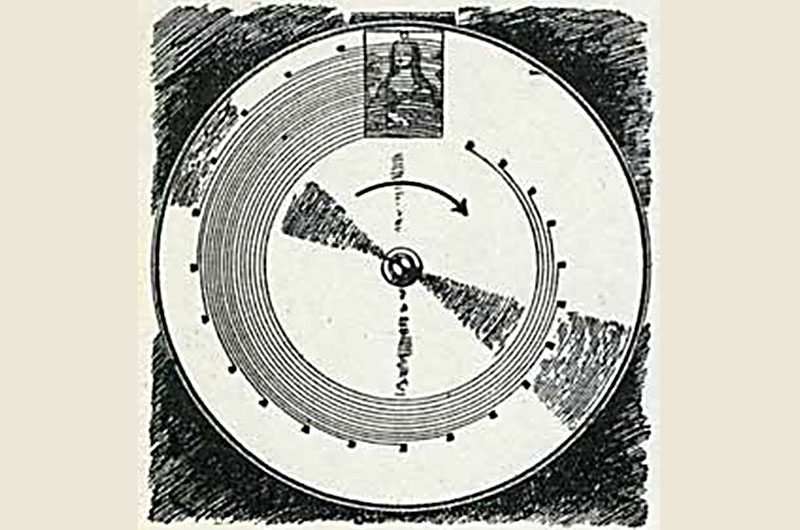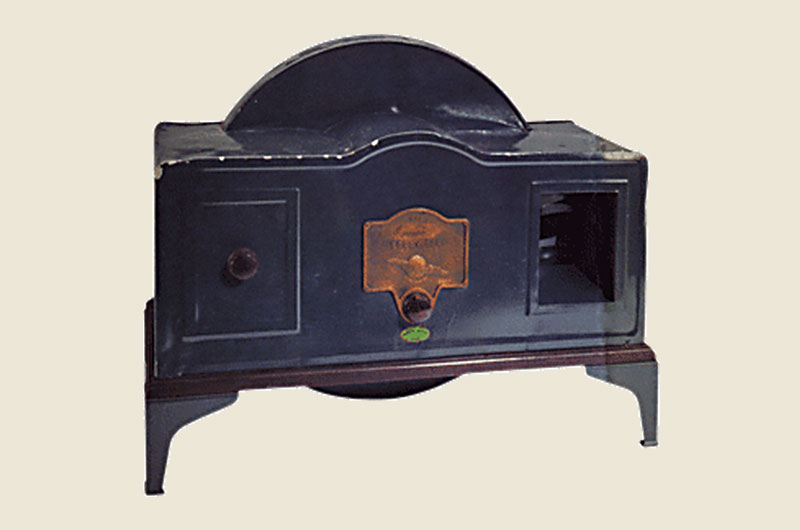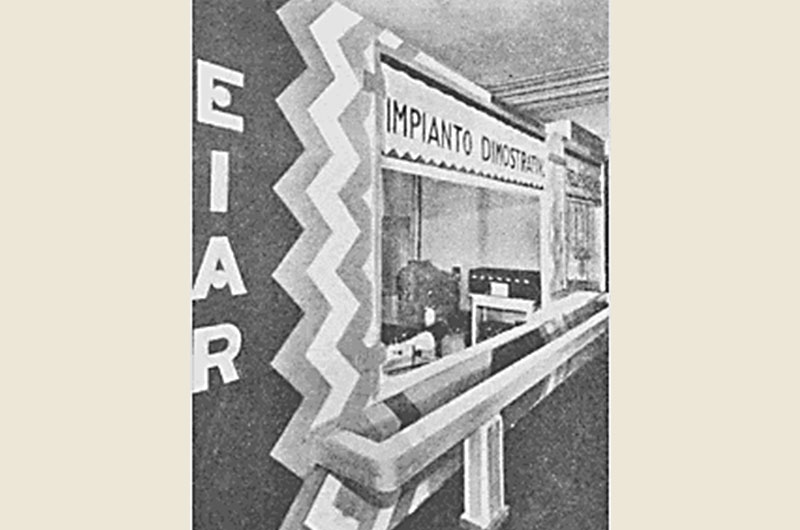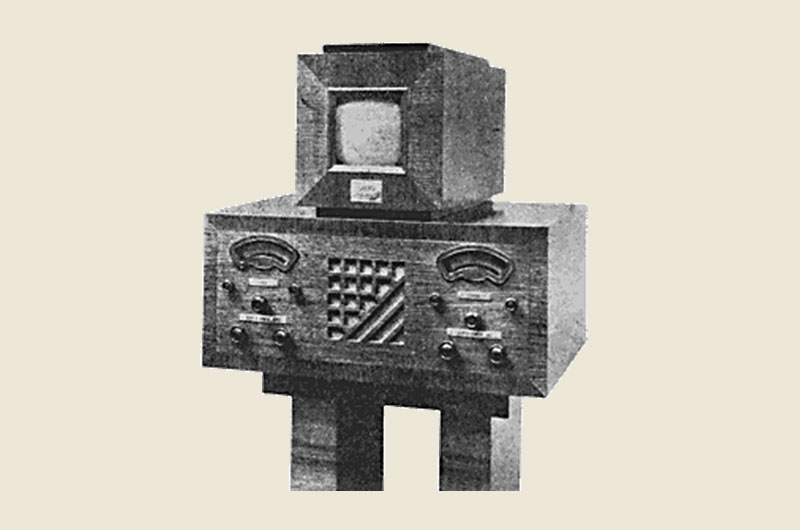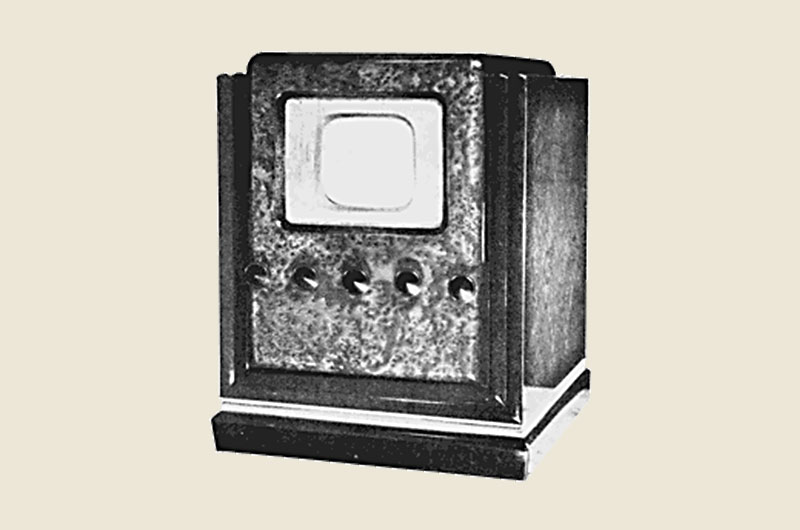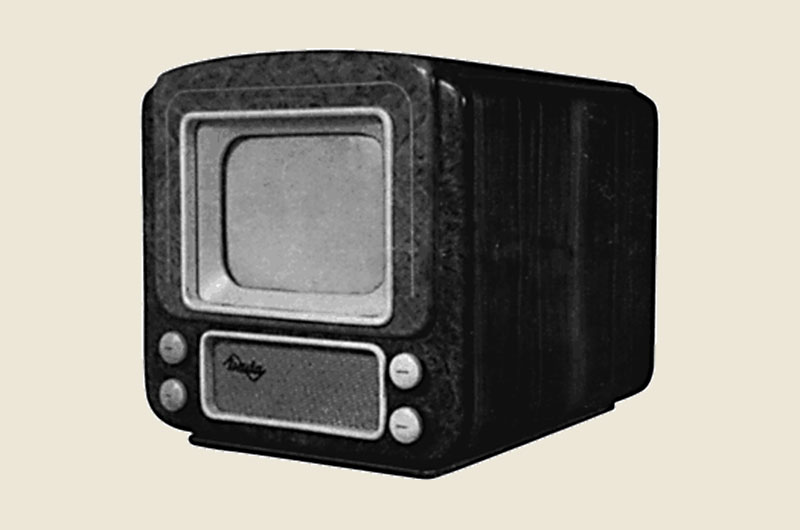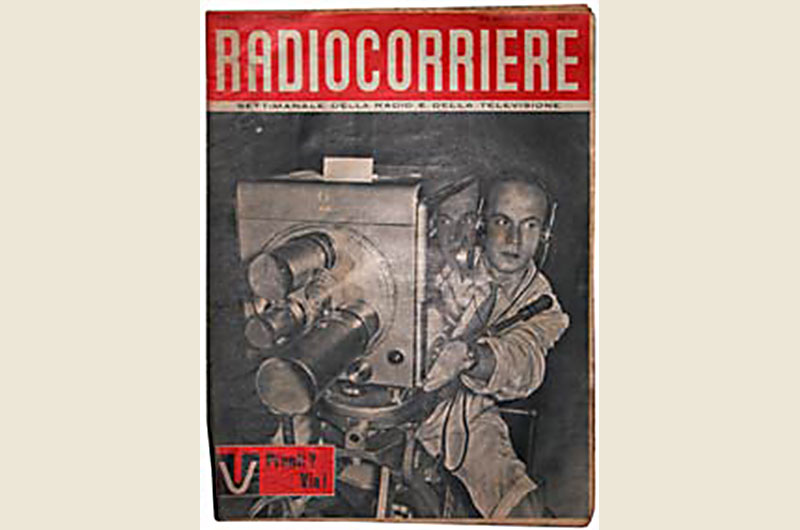Brief History of Television
by Mosè Battocchio – Translated by Nicolò Rubini and Lisa Glauber
The first research and experiments of image transmission date back to the 1850’s, but many years will go by before equipment able to receive and transmit images in motion was built. An important first step was made by the German Paul Nipkow, who used a disc in motion to scan images. The disc had small holes situated along a spiral. But for television to take off, radio technology had to be perfected first with the invention of electronic tubes.</br><br>After the first British experiments by Baird, in 1926 Ing. Alessandro Banfi introduced his “multiple channel” television system at the headquarters of the Associazione Elettrotecnica Italiana. The Banfi system was completed by EIAR in 1929. Under the supervision of Ing. Banfi, in charge of the newly born television division, the first television system was established in Milan and Turin. In 1931, still on an experimental basis, a similar, but much more sophisticated system was installed in Rome.</br><br>Experimentation continued in Rome and then in Turin between 1933 and 1934. In 1938 EIAR, after having built the imposing radio communication center at Prato Smeraldo capable of transmitting the Duce’s voice in the entire empire, the first Italian television broadcasting station was built at Monte Mario.</br><br>Meanwhile Italian industry followed these new developments with keen interest. Safar, under the leadership of Ing. Arturo Castellani built the first industrial television sets and in 1930 displayed the new technology at the National Radio Exhibit in Milan. The device made use of Nipkow’s scanning disc. It is interesting to note that already in 1932-33 kits were available to build the first home-made television sets, such as those produced and marketed by Fracaro Radio Industria di Castelfranco Veneto.</br><br>Nipkow’s scanning disc was used, specifically modified, until 1933, when Safar used the electrostatic deflection cathode ray tubes for the first time. Another great Italian company which pioneered in the television broad-casting system was F.I. Magneti Marelli. This company, working in this field since 1933, built a television station on Torre Littoria in 1939, similar to the one built by Safar on Monte Mario.</br><br>The Second World War which lasted for almost 5 years in Europe (1940-1945), put tremendous pressure on the communication industry to produce for the war effort. The industry responded with spectacular inventions, such as micro-waves, radar, radio links,….to name just a few.</br><br>The post-war years in Italy were extremely difficult and many companies, without Government contracts, were on the verge of closing down. EIAR became RAI and in 1952 built a second television broadcasting station in Milan: the recording studios were located in RAI’s offices in Corso Sempione and the antenna on top of the former Littoria Tower. Between 1952 and 1958 a network of radio and television links, which, through 21 connections, united the whole country, from Turin to Palermo.</br><br>On January 3, 1954 the newspapers reported the baptism of Italian television in Milan approximately as follows: “this date is the official birth date of Italian television, which will be listed in the ideal registry of human progress under the heading of ‘home entertainment’ or ‘the hearth of the twentieth century’. In this registry all new inventions marking the incessant march toward the great achievements of modern civilization will be listed.” (From Radio Industria, # 171, special edition).</br><br>Colour television broadcasts will begin 24 years later, in 1978.</br><br>It is clear that we live in an era of incredible developments, of daily un-imaginable achievements, which may surprise us but also find us often un-prepared. Great opportunities are matched by feelings of uneasiness. This website gives us the opportunity to stop for a moment and make us think, to revisit the past and to imprint it in our memory, in order to help us build the future.

